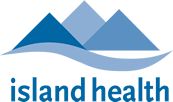medication use systems
| Rotation Details | Rotation Specific Information (click below to download) |
|---|---|
| Rotation Type | Non-Direct Patient Care (Non-DPC) Mandatory |
| Rotation Duration | 3 Weeks |
| Rotation Locations | NRGH (Nanaimo), RJH (Victoria), VGH (Victoria) |
| Click to Download Rotation Specific ROAD as PDF | Medication-Use-Systems-2022.pdf |
| Click to Download Rotation Specific ROAD as MS Word Document | Medication-Use-Systems-2022.docx
|
| Click to Download Rotation Description as MS Word Document | Medication-Use-Systems-Description-2022.docx
|
documents for download
click on icon below to download document
rotation description
The Medication-Use Systems rotation draws a majority of their competency requirements from standard 3.2 “Manage and Improve Medication-Use Systems” but touches on a variety of competencies in other standards including being part of an Interprofessional team, leadership, practice-related education and project management skills.
The rotation is comprised of a series of meetings with the Pharmacy Manager, and three weeks of dedicated rotation time at an assigned rotation site. Residents are exposed to various aspects of medication-use systems to facilitate the development of a “working knowledge of medication use systems”. Safe medication practices and concepts are integrated into all discussion, objectives and activities throughout this rotation. Rotation activities include both observation and active participation with a variety of the pharmacy assistants/technicians and pharmacists.
The rotation includes a distinct component focused on sterile product compounding and distribution. Residents are provided with an introduction to sterile preparation. Various examples include medications for injection, topical or injectable ophthalmic preparations, bladder instillations, medications for intrapleural administration and medications intended for the epidural or intrathecal route. The resident will be introduced to parenteral nutrition, oncology protocol orders, the use of aseptic technique for the preparation of IV admixtures (including hazardous medications), and the processing of other patient specific medication orders that require sterile preparation. In addition, key resources and guidelines explicit to sterile product compounding will be explored. During the rotation, the resident will be expected to work and communicate with pharmacy technicians/assistants, dietitians, physicians and other pharmacists to process orders for sterile products and resolve drug related issues as they arise.
By the end of the rotation, residents will be able to use their knowledge and skills regarding medication-use systems to optimize patient safety and patient care. Accordingly, residents will apply their knowledge of medication management tools (such as formularies, automatic substitution policies, medical directives,) and therapeutic strategies (such as therapeutic drug monitoring, drug utilization review,) to ensure safe and effective use of medications within the health care organization. Residents will also utilize reporting systems (such as adverse drug reports or medication incident reporting) as vehicles to improve the quality of medication use within the health care organization or system.
The rotation is comprised of a series of meetings with the Pharmacy Manager, and three weeks of dedicated rotation time at an assigned rotation site. Residents are exposed to various aspects of medication-use systems to facilitate the development of a “working knowledge of medication use systems”. Safe medication practices and concepts are integrated into all discussion, objectives and activities throughout this rotation. Rotation activities include both observation and active participation with a variety of the pharmacy assistants/technicians and pharmacists.
The rotation includes a distinct component focused on sterile product compounding and distribution. Residents are provided with an introduction to sterile preparation. Various examples include medications for injection, topical or injectable ophthalmic preparations, bladder instillations, medications for intrapleural administration and medications intended for the epidural or intrathecal route. The resident will be introduced to parenteral nutrition, oncology protocol orders, the use of aseptic technique for the preparation of IV admixtures (including hazardous medications), and the processing of other patient specific medication orders that require sterile preparation. In addition, key resources and guidelines explicit to sterile product compounding will be explored. During the rotation, the resident will be expected to work and communicate with pharmacy technicians/assistants, dietitians, physicians and other pharmacists to process orders for sterile products and resolve drug related issues as they arise.
By the end of the rotation, residents will be able to use their knowledge and skills regarding medication-use systems to optimize patient safety and patient care. Accordingly, residents will apply their knowledge of medication management tools (such as formularies, automatic substitution policies, medical directives,) and therapeutic strategies (such as therapeutic drug monitoring, drug utilization review,) to ensure safe and effective use of medications within the health care organization. Residents will also utilize reporting systems (such as adverse drug reports or medication incident reporting) as vehicles to improve the quality of medication use within the health care organization or system.















